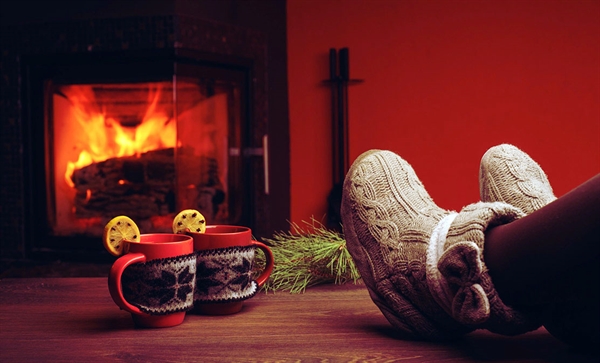This year global energy prices have soared and the costs are being passed on to consumers.
Interest in alternatives to oil, gas and electricity heating has never been higher, and we’ve seen more enquiries than usual about our firewood.
Although we’d be very pleased if more people turned to logs for heating, we’re very aware that this winter is one where fuel poverty will be a more common experience than it has been for many years. Understandably, this has caused a lot of anxiety. So before we talk about firewood as a home fuel, we want to make sure that any reader concerned about heating bills is aware of these trustworthy sources of information and help.
- Ofgem help with bills guide and Ofgem list of schemes and grants to help with home energy. Ofgem is the Office of Gas and Electricity Markets. It is a non-ministerial government department that protects consumers by working towards a fairer, greener energy system.
- The government’s energy bills support scheme. This government scheme will give all eligible households a series of discounts totalling £400 on their energy bills from October. In many cases, it will kick in automatically, via your energy supplier.
- Citizens Advice page on What to do if you’re struggling to pay your energy bills. Citizens Advice is a charity that gives people the knowledge and confidence to move forward with any problem.
With that public service announcement out of the way, here’s what you need to know about using a log burner as a domestic heat source.
Could I heat my home with a log burner or fireplace?
Most log burners and fireplaces will heat only the room they are in, with a 5kw stove being best for a small to medium-sized room. But this will allow you to turn down the heating in your home, reducing your gas, oil or electricity bill.
There are stove systems that will allow you to cook and some stoves can heat water for domestic use, which could be circulated in your central heating, although these are more costly and disruptive to set up.
Every home has different heating needs, however, and to get the best benefits from a log burner, talk with a qualified and registered stove installer. The Stove Industry Alliance has a handy directory that will help you find a local stove expert.
What are the set-up costs of installing a log stove for domestic heating?
Wood stoves vary enormously in price, and installation needs to be done by a specialist as there are structural and safety considerations involved in using a log burner. But Checkatrade puts the average installation cost for a log stove at about £2,000 (assuming your home has a chimney and a hearth). It goes on to say that a stove will cost on average £950.
How much does it cost to run a wood burning stove?
There are two main running costs involved in using firewood for domestic heating. The first is the cost of the firewood or fuel itself. The second running cost for a fireplace is that a chimney in use needs to be swept regularly.
Cost of firewood to heat a home
It is difficult to estimate how much firewood you will need to heat a given home because there are so many variables. But an average 5kw stove used to heat one room during evenings and weekends from October to April will burn 3 to 4 cubic metres of good quality fire wood – that’s about as much firewood as you can fit into a flatbed truck.
Hardwood will burn for longer with better heat, but softwood can be used as well. Damp or unseasoned wood will not give as much heat and may smoke more than properly prepared firewood, so it’s worth buying the best. And kiln-dried fire wood is the most efficient of all.
How much does it cost to get your chimney swept?
It’s important to get your chimney swept regularly if you are using your fireplace or wood burner. A badly maintained chimney is likely to result in poor air quality in your home and in the environment. It also puts you at risk of chimney fires.
As well as cleaning out soot and blockages, the sweep will inspect your chimney and its liner. A sweep may also service your log burner to ensure it is burning efficiently. The National Association of Chimney Sweeps recommends getting chimneys for wood-fired appliances swept quarterly when they are in use.
So is firewood a viable alternative to heating by gas, oil and electricity?
Most log burners supplement a gas, oil or electricity heating system, rather than replace it entirely. It’s also important to consider the set-up costs of a log burner, and it may be a while before you see real savings. But an efficient stove burning top quality firewood could allow you to rely less on gas heating, and it makes for pleasant, cosy atmosphere at home.

